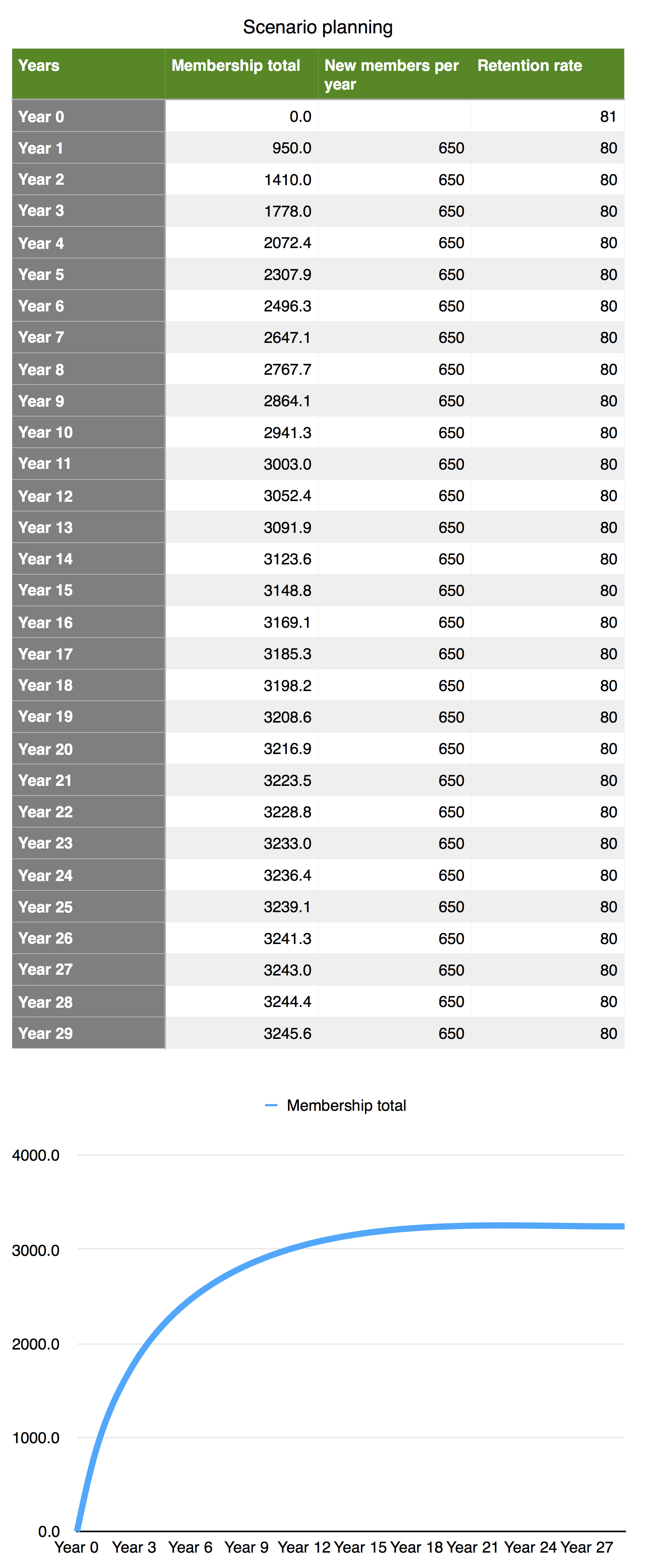
on 30 Mar 2017 12:15 PM
Here's two measures - membership retention and membership tenure - that can give you really good insights into the state of your membership and will help you plan for future scenarios.
Membership retention rate
This is sometimes called the membership renewal rate. You gain members and lose members all the time. The membership retention rate puts a figure on this. The formula provides a percentage renewal rate.
(Number of members now - the number of members who joined over the year)/(Number of members a year ago) x 100
Example: We have 2500 members today. Over the last 12 months we recruited 480 members. Twelve months ago our membership was 2450. What is the retention rate?
(2500-480)/2450 = 2020/2450 x 100 = 82%
So this means you are keeping about 80% of your members each year, and losing 20%. The 20% is sometimes called the churn rate.

In the table we can see that over a period of 5 years, this organisation has maintained a retention rate of around 80%.
So what should be a good retention rate?
This really depends on a lot of factors and 80% might be good for some, not good for others. You can look at annual membership surveys such as this one for the UK market by Sue Froggat or this one from Marketing General in the US. 80% seems to be a sign of good health. What that means is that you are providing pretty good membership value.
Changing your retention rate can be quite challenging, but small differences in the rate create large differences in membership numbers over time.
Tenure rate
The tenure rate measures how long on average someone stays a member, and is usually measured in years.
The formula is: 1/1-retention rate
Example: My retention rate is 0.81. So my tenure rate is 1/(1-0.81 = 1/0.19 = 5.33 years.
The tenure rate comes into play when we look at the revenue formulas for membership, the subject of the next blog. Knowing tenure means we can calculate the lifetime value of a member and the maximum cost we can bear in recruiting a member.

In the table we can see that over a period of 5 years, this organisation has a tenure rate of just over 5 years.
Scenario planning
If our retention rate stays the same, we can look at what happens when we try to grow our membership over time.
For example it may be that we can commit to recruiting 650 members a year, of that we will lose 20% by the end of the year.
So at the end of year 1, we would have 520 members.
At the end of year 2 we would have an extra 650 members making 1170. But we would lose 20% of those, making our end of year membership 936. And so on.
In the end we reach a steady state where the numbers we recruit are balanced by the numbers that leave.

In the table we can see that this organisation has the resources to add 650 members each year and has a 80% retention rate. Gains in membership numbers are great early on, but dwindle over time until a steady state is reached.
So if your organisation wants to "double it's membership" it's well worth taking the trouble to get your retention rate and start doing some scenario planning to see if this is a realistic proposition.

